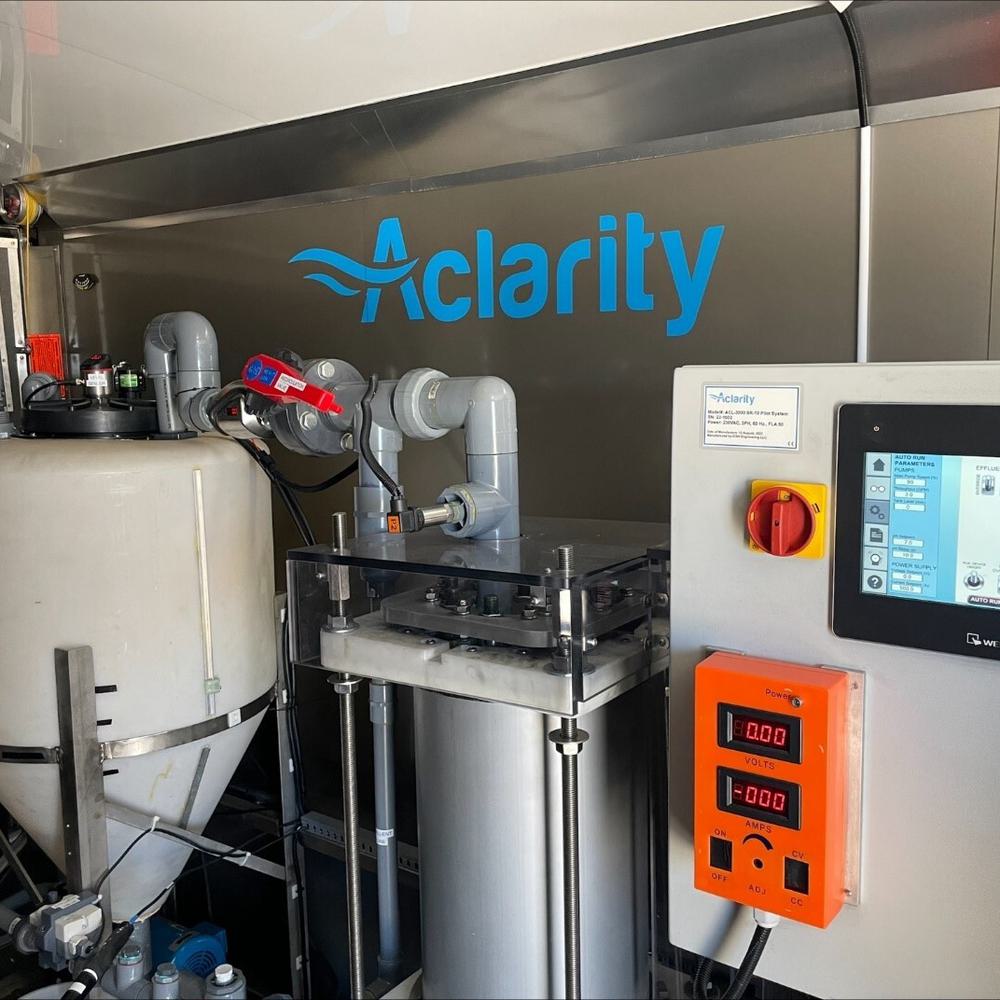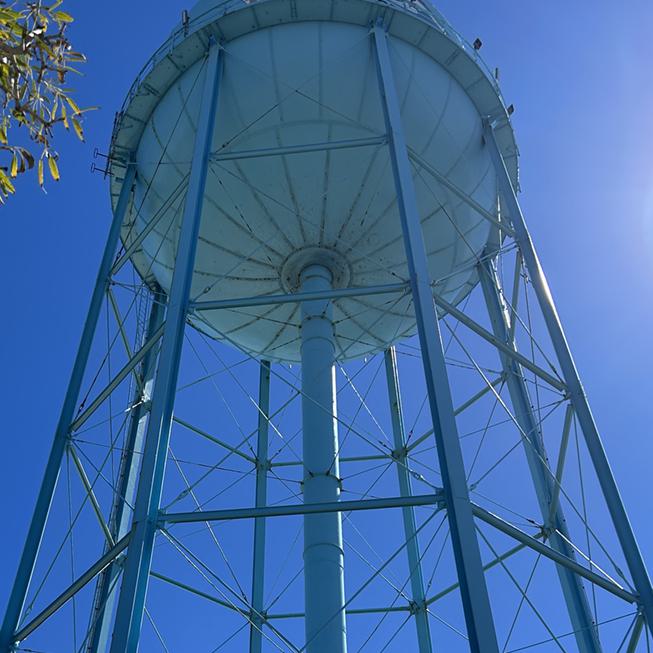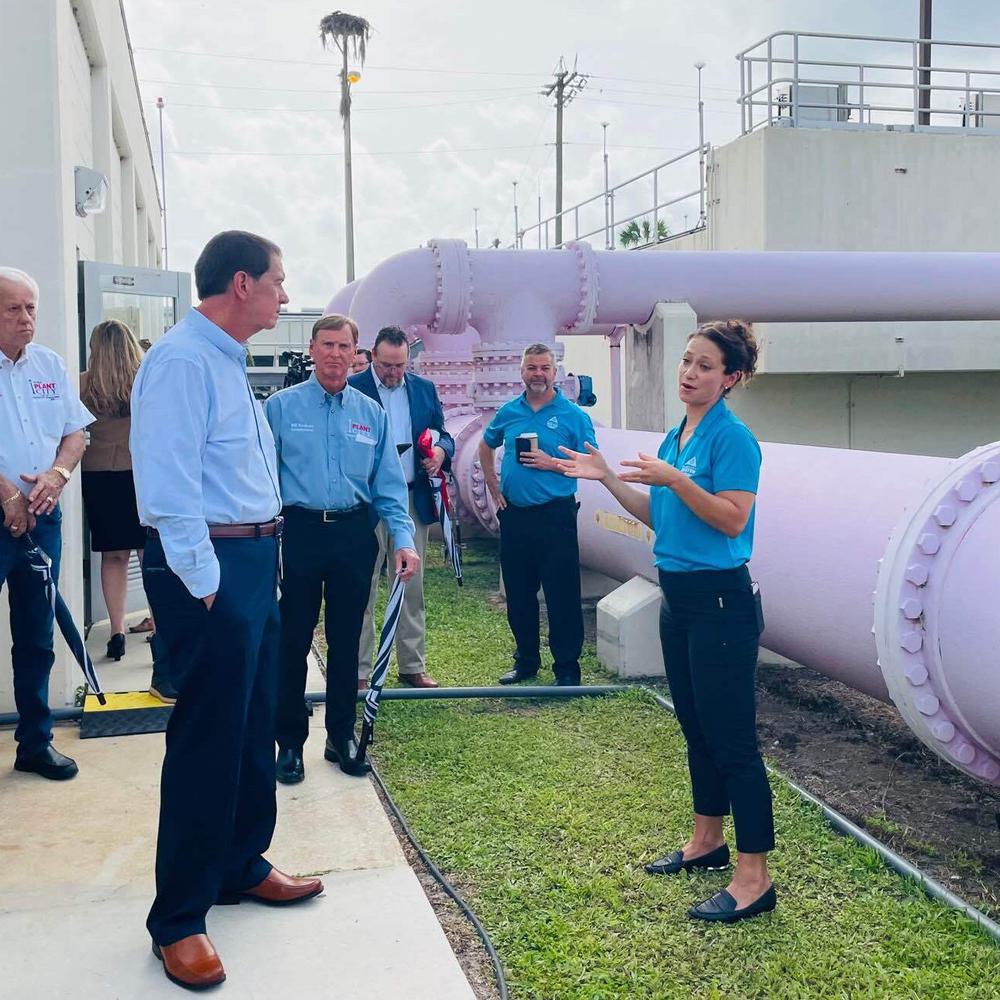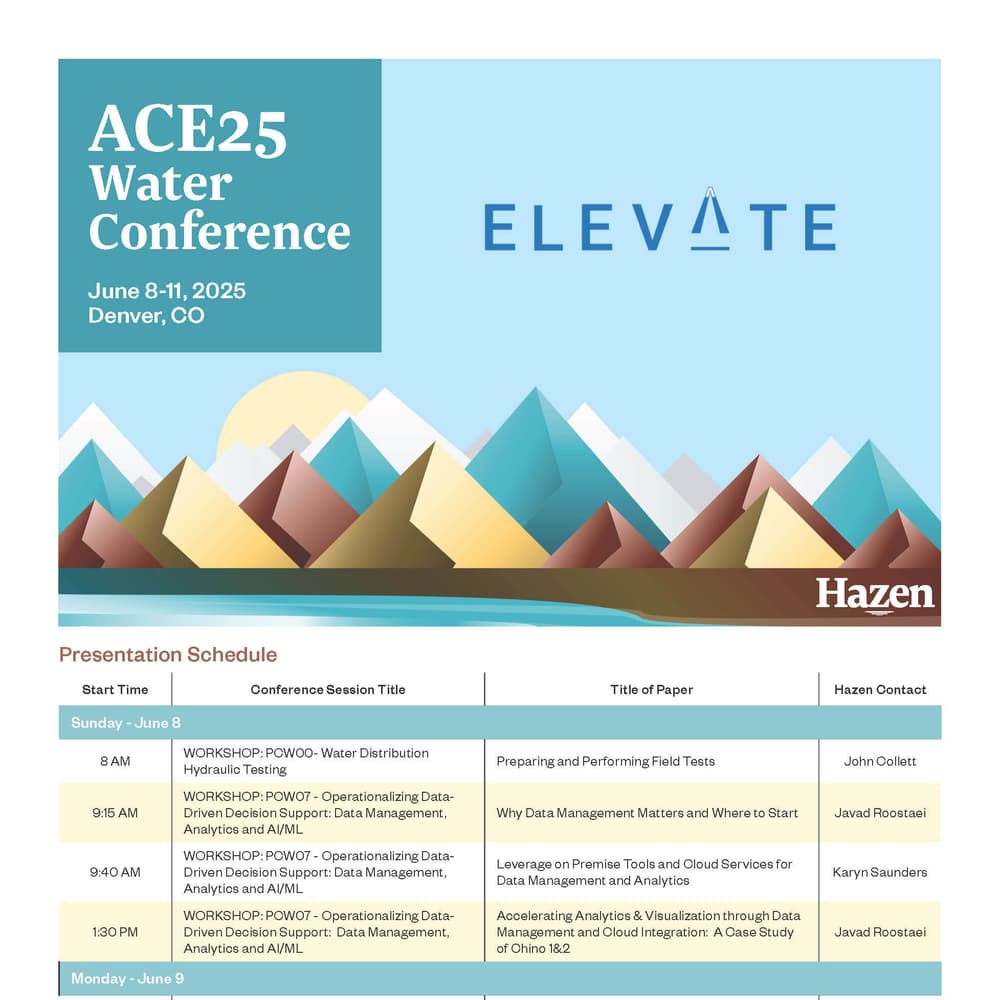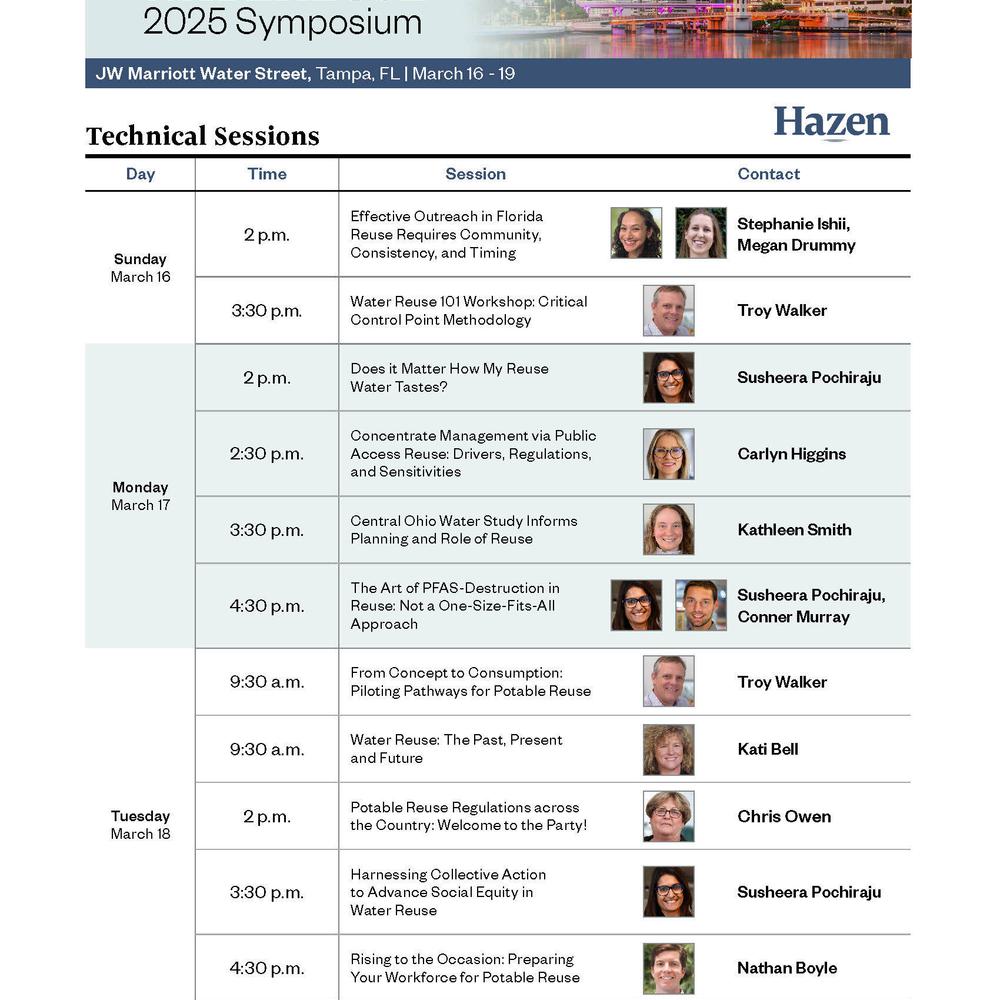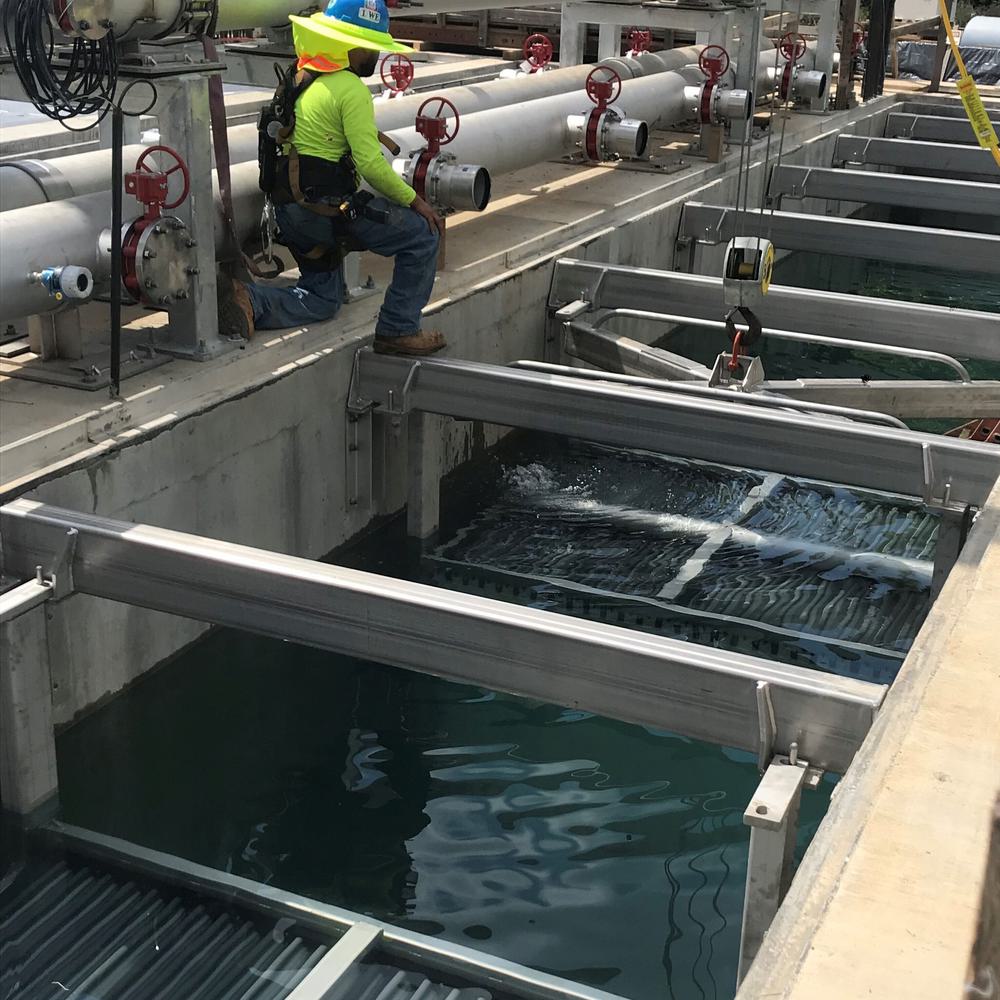Forward-Looking Research Aims to Test the Limits of Water Recovery
Hazen and the Orange County Water District are teaming up to study how real-time data analysis and automation fueled by machine learning can boost the efficiency of reverse osmosis membranes for water reuse.
At a Glance:
- The U.S. Bureau of Reclamation periodically awards funding to selected water professionals to develop new technologies for making water treatment more efficient and affordable.
- Hazen partnered with the Orange County Water District and won a grant through the Bureau's Pitch to Pilot program to study a method for increasing water recovery in reverse osmosis systems.
- The study focuses on how real-time data analysis and machine learning can help maximize membrane performance to increase water production and conserve energy.
- This cross-regional collaboration represents proactive innovation that could help utilities and other water operators achieve their future water goals more efficiently, sustainably, and cost-effectively.
Reverse osmosis (RO) is a prevalent water purification method that can be used to produce high-quality water in water recycling and desalination systems. For municipalities, it’s a key step in successfully implementing water reuse strategies to address water reliability and scarcity challenges. RO is being rapidly adopted around the world, but it’s a complex and energy-intensive process that can be expensive to implement and operate.
That’s why the U.S. Bureau of Reclamation’s Desalination and Water Purification Research Program (DWPR) exists. The DWPR makes research grants available to academics, utilities, and consultants—funding that enables water industry experts to develop new technologies and processes to help reduce the cost and improve the efficiency of water treatment.
In 2023, Hazen’s Dr. Ben Stanford partnered with longtime collaborator Dr. Megan Plumlee, Director of Research with the Orange County Water District (OCWD), to present a proposal to test a method for maximizing RO recovery to the DWPR. The team won one of the organization’s Pitch to Pilot grants. The goal of their research is to evaluate how tuning RO systems to be more dynamic—with the help of machine learning and real-time data analysis—could enable utilities to maximize water production while conserving energy and protecting the integrity of valuable RO equipment.
Dr. Ben Stanford leads Digital Services for Hazen and is an internationally recognized expert in the field.
Dr. Javad Roostaei is the Director of Data Science at Hazen and has contributed extensively to the water industry's data science field, specializing in statistics, machine learning, and cloud technologies.
Related Topics:
Applied Research
Digital Strategies and Solutions
Operations Assistance
Reuse

Hazen and OCWD’s research is being conducted in pilot test skids at OCWD’s Groundwater Replenishment System, the world’s largest water purification system for indirect potable reuse.
The Importance of Membrane Performance
For the study, the team decided to focus on a costly and universal challenge that affects RO efficiency—membrane performance. In RO, water is pumped at high pressure through membranes that remove chemical constituents within that water. The better the membranes perform, the more quantity of purified water is produced, or “recovered.”
However, many factors can negatively impact membrane performance. Membranes can “foul” when contaminants from the water passed through them build up, eventually decreasing water recovery or causing the RO pump to work at a higher pressure to maintain the permeate flow. Different water chemistry can affect the speed and severity of this fouling. Sometimes fouling can be remedied through membrane cleaning cycles, but there is still typically some potential water permeability lost. Membranes can also become damaged if water is pumped through them at too high a pressure.
Water recovery for RO systems depends on the quality of the raw water being treated. The team’s tests are being conducted in pilot test skids at the OCWD’s Groundwater Replenishment System (GWRS), where the typical recovery rate is about 85%. This high recovery rate is made possible by the extensive pretreatment of the GWRS’s source wastewater from the Orange County Sanitation District (OC San). The GWRS then uses its own combination of advanced treatment technologies—including microfiltration, RO, and ultraviolet disinfection—before injecting the purified water into the groundwater aquifer to replenish supplies and prevent seawater intrusion into freshwater basins.
With the context of this high existing recovery rate, the research team set out to test the limits of membrane performance and explore whether higher water recovery could be achieved without equipment or membrane damage.
“We typically design RO systems conservatively assuming that we’ll always have the worst quality water coming through. In reality, water quality changes throughout the day at these types of facilities. So, there may be an opportunity to tune these systems to be more dynamic and reactive rather than using static settings.”
Ben Stanford, Associate Vice President and Digital Services Lead at Hazen
The Role of Data Analysis and Machine Learning
The team’s hypothesis is that, by fluctuating an RO system’s pumping pressure throughout the day, more water can be squeezed out of the system while keeping the membranes safe—and likely conserving pumping energy in the process. This is where real-time data monitoring and machine learning come in, analyzing the interplay between changing water chemistry, fouling, and water production, then adjusting pumping pressure accordingly to achieve consistent water recovery.
“Essentially we’re trying to get more production from the membrane while still preserving its longevity,” says Dr. Javad Roostaei, Director of Data Science with Hazen. “We want to go beyond the standard design for this type of RO system and see what’s possible."
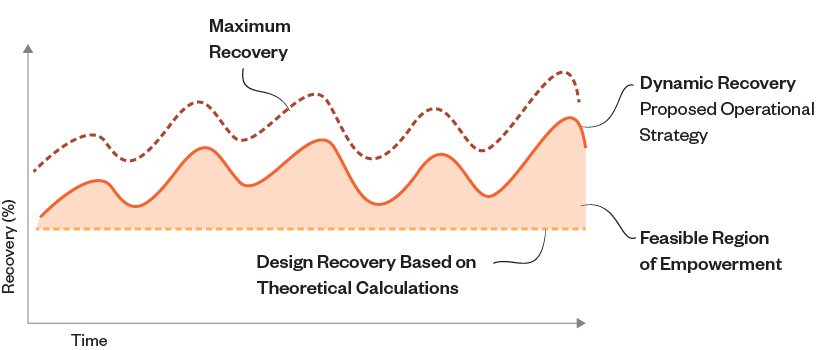
RO systems typically run on conservative, static pumping settings that don’t take changes in water chemistry or membrane fouling into account. The team is testing whether fluctuating pumping pressure in response to these factors can increase water production.
Improving data management to enable more nimble decision-making and better membrane performance is not a new initiative for the Hazen team. Prior to his involvement in this research with OCWD, Roostaei led efforts to help the Chino Basin Desalter Authority implement similar data-driven automations and developed methods (using cloud and on-premise solutions) for managing these massive amounts of data in a cyber-secure setting. These were foundational experiences that set the stage for this research and helped the Hazen and OCWD team earn the DWPR grant.
A Winning Team, A Hopeful Outcome
Testing the limits of membrane performance is not a practice that utilities typically undertake. Stanford notes that it could be very costly for utilities to void their membrane warranties by experimenting to achieve recovery beyond the allowed rates at full scale.
This is a big reason why OCWD was uniquely positioned to help lead this research. By providing the equipment and setting to run these experiments at a small scale, OCWD empowered the team to truly test the limits of water recovery. As the study continues, the team will incrementally increase the desired water recovery percentage, monitoring how water make-up, membrane fouling, and pumping pressures behave at each rate.
Stanford notes that “any facility that may be considering or that is currently using RO membranes could benefit” from this research as, when implemented at a large scale, even small adjustments to improve membrane performance can add up to significant cost savings and energy efficiency.
Once the results from this research come in, the team plans to publish a report on their findings. Stanford notes that this research is emblematic of the proactive collaborations and innovations that water professionals must undertake to solve future water challenges.
“This is the type of out-of-the-box thinking that we need to be doing to find sustainable solutions for our clients,” says Stanford. “We need to be asking ourselves what we can be doing to go beyond what’s being done today. We look forward to seeing where this research leads.”






